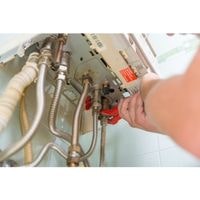Heil furnace troubleshooting. When it comes to providing you with home comfort and knowing that your HVAC needs will be accounted for, the Heil brand takes its products seriously.
If you do have any issues down the line with your Heil furnace, they’ve put together a guide to help you troubleshoot common problems, from an air filter that may not be working properly to an error code being displayed on the thermostat.
Regularly changing the air filter is one of the most important things one can do. Otherwise, you’ll run into clogged blower motor coils, and soon enough, your unit might fail altogether due to a lack of airflow or insufficient filtration.
Heil furnace troubleshooting

Here we will discuss some common issues and solutions for heil furnace troubleshooting.
Not Heating Up
An igniter is the part of your furnace that lights the gas. If it fails or crumbles, you can’t start a fire and won’t be able to keep warm. Check to see if the igniter is cracked.
If the igniter is snapped in two or split open, replace it right away. Check if your igniter isn’t cracked by using a multimeter when you turn it on because some things can deceive your eyesight.
The flame sensor detects the presence of a flame. Usually, a pilot light causes the sensor to detect a flame properly.
The control board will turn off the gas valve if the operator tells the furnace to heat with a thermostat and there isn’t a flame.
A dirty flame sensor might fault when exposed to infrared radiation from an open flame and cause the control board to act as though there is no flame present when in fact, ignition of fuel has occurred.
You may clean it with fine abrasives carefully or try to replace it with one from your local hardware store.
Problem with blower
The blower motor blows air through the return vent, past the heat exchanger, and into the home’s ducting. First, make sure that power is getting to the motor.
If power is getting to the blower motor, but the motor does not run, chances are it may be burned out.
If the blower motor is burned out, replace it with a new one immediately, as waiting too long could cause further problems.
If the blower motor hums, check to ensure that it spins freely by removing dust or debris blocking its path.
If there is no obstruction in its rotation and it does not spin freely either you need to either fix or replace your fan’s blades so they can get up and running again.
Produce Noise
Furnaces sometimes produce noise due to defective blower wheels. The blower wheel is a common issue affecting furnaces, but there are plenty of ways to get it fixed and up and running in no time.
While the issue may seem like a daunting problem to fix, the best thing to do when it’s not blowing out warm air is to first double-check that there isn’t a problem with the electricity or any other area that could be preventing the unit from turning on.
There are some obvious signs that you can see in order to investigate further, such as whether or not your furnace is clanging along loudly whilst in rotation
Or if it shows any signs of rust or damage, which could indicate a potential fault. Finally, inspect the wheels and replace them as needed.
Starts then stop the problem
The flame sensor detects the presence of fire, giving a signal to the main thermostat to turn on the heat.
The sensor may also shut off power to the gas valve to prevent ignition if there is no airflow, a low oxygen warning, or a reduction in temperature.
If you need to clean the sensor, use a fine abrasive pad and check for any obstructions potentially in front of it.
All of the furnace’s components are powered by the control board. The furnace may shut off after a few minutes if the control board short circuits, failing to deliver voltage to the ignition system.
Furnace blower runs Continuously
This issue could arise due to a defective wall thermostat. There is an electrical switch located on the surface of your thermostat.
This switch can not show continuity to everything you want it to be tested for, and it definitely doesn’t always give a result that stands up as appropriate or accurate.
Now your fail-safe thermostat switch may seem more reliable than some of its counterparts, but there’s something they can do in this day and age that you probably don’t really have time for.
Related Guides
